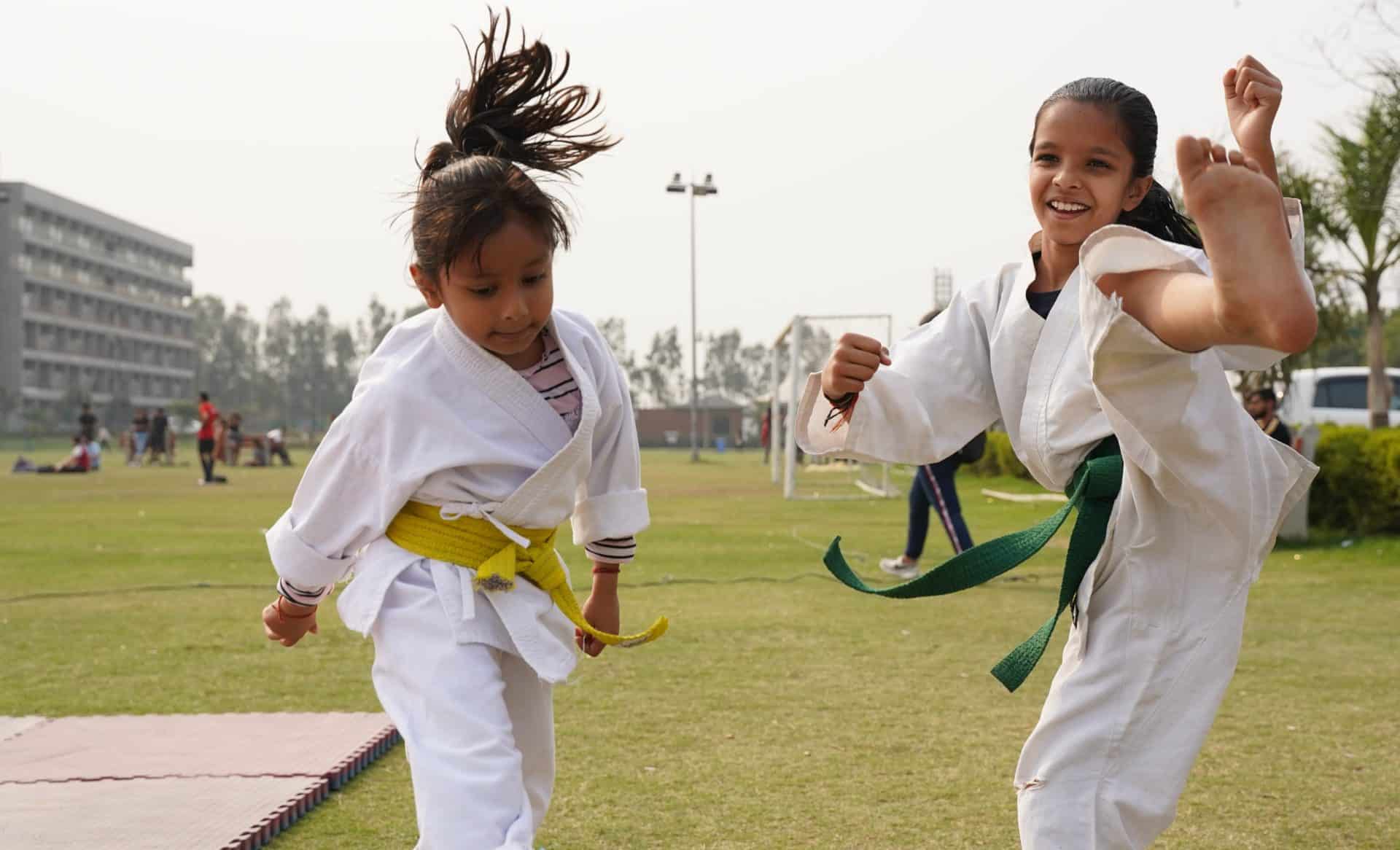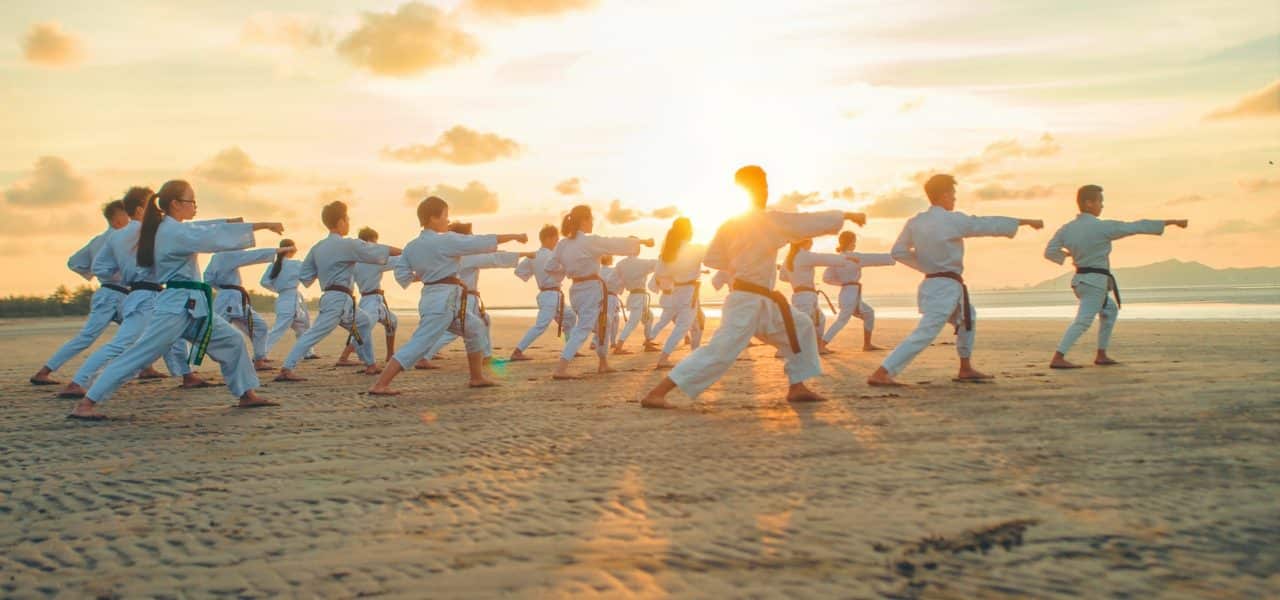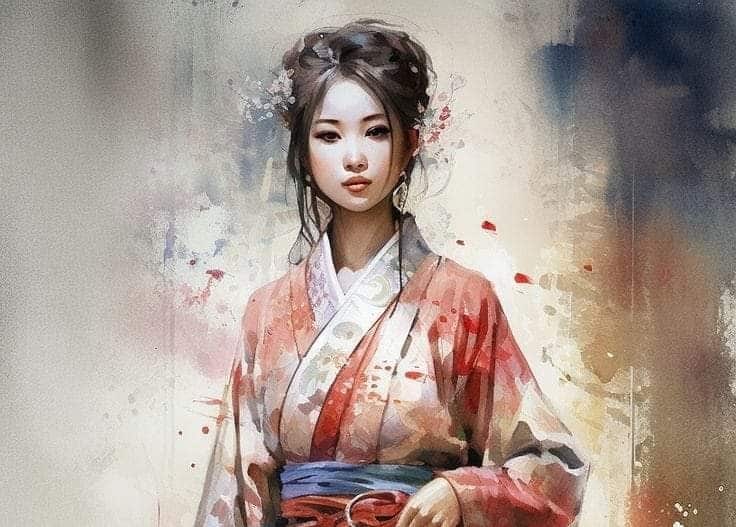Your cart is currently empty!
Karate, Judo, Jiu Jitsu or Aikido: which martial art should you choose?
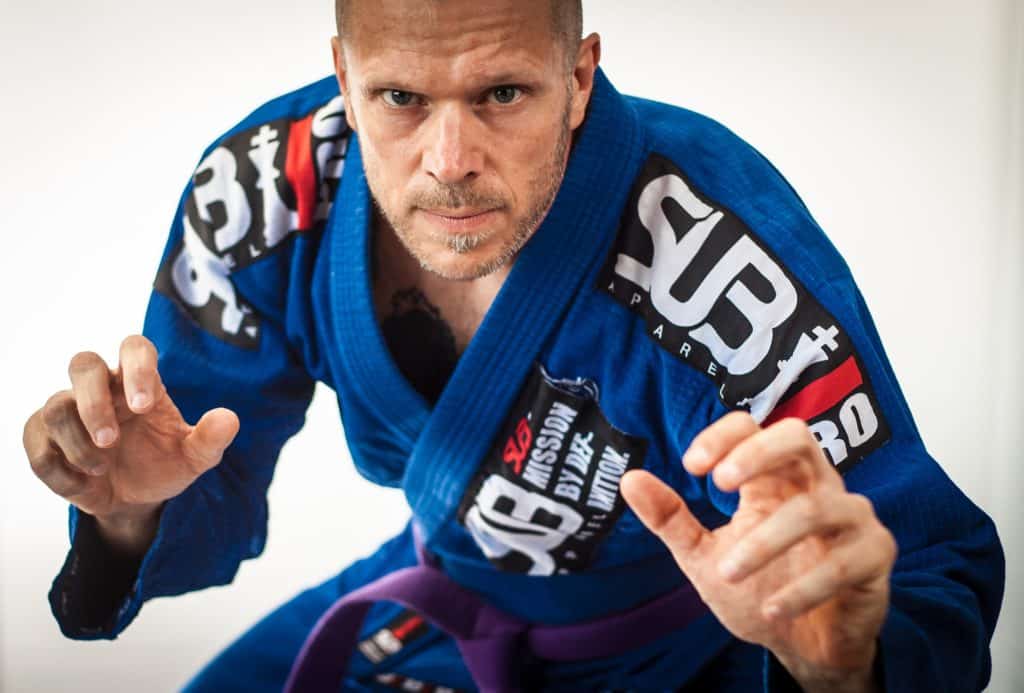
Are you planning to take up a martial art this autumn, but don’t know which one to choose? To help you decide, here’s a quick look at the differences between Karate, Judo, Aikido and Jiu Jitsu, 4 of the best-known Japanese martial arts.
Table des matières
1. Karate
Karate, which probably originated in Okinawa, means “empty hand”(kara-te). From a technical point of view, this is indeed a “bare hands” discipline, but “the empty hand” also evokes, from a philosophical point of view, the notion of “emptiness” in Buddhism. In this way, practice can also lead to a form of “letting go”.
Karate practitioners, known as karatekas as in all Japanese martial arts, apply the code of bushido (“way of the warrior’s techniques”). From then on, Karate, Judo, Jiu Jitsu and Aikido are subject to values which, beyond being sports, make them true arts of living: honor, courage, respect, humility… In reality, martial arts involve the whole person: body, mind and sometimes even spirituality.

There are several styles of karate, depending on the master and school, including Shotokan, Wado, Shito and Goju.
Whatever the style, Karate is characterized by striking (fists, elbows, feet, open hands…) and blocking techniques.
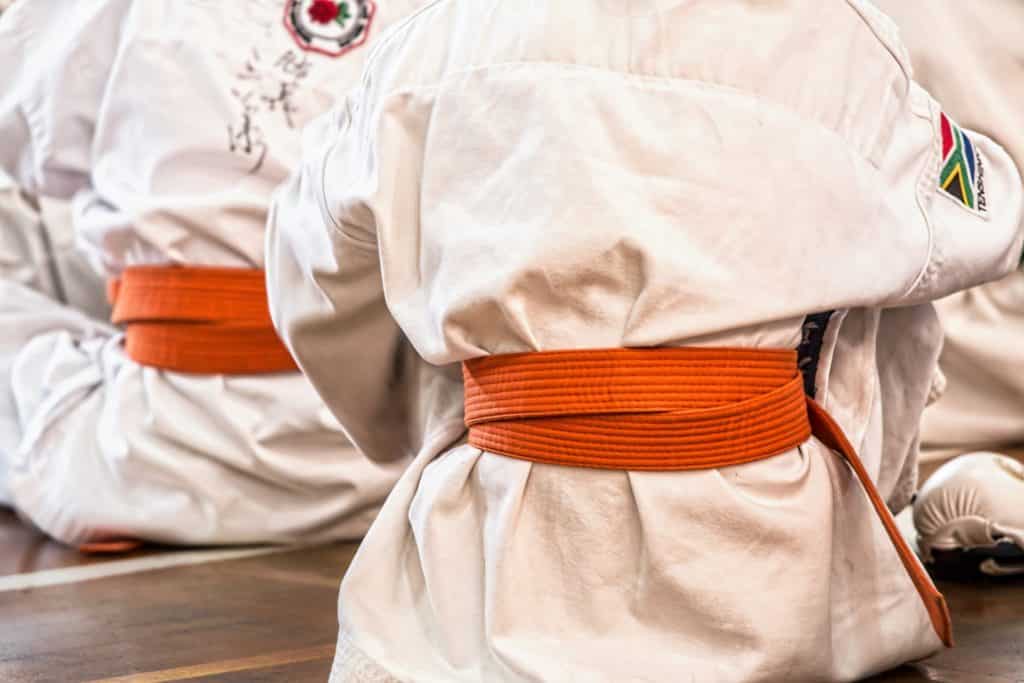
Competitions are organized: in fact, karate is scheduled to become an Olympic sport at the next Olympics in Tokyo (XXXII Olympiad in 2021). Competitions kata competitions illustrate the sequences of codified techniques, performed in a vacuum, that enable practitioners to perfect their movements. Visit Kumite Kumite, or sparring, pits two opponents against each other, each wearing a red or blue belt to distinguish them.
The karateka’s outfit consists of a karategi (wrongly called a kimono), usually white, and, sometimes, protective gear : gloves, helmet, mouth guard, shin guard, shell… As for the belt, it has become a symbol of progression in all martial arts. In Karate, the order is: white, yellow, orange, green, blue, (mauve) brown and black. But this gradation can vary from school to school.
2. Judo

Judo refers to the “way of suppleness”. Created in 1882 by Jigorō Kanō, it is not only a modern martial art, but also an Olympic sport.
It combines projection techniques(nage waza) designed to throw the opponent off balance and knock him to the ground, with immobilization and control techniques, using various keys and chokes(katame waza). Unlike karate, our practice involves a great deal of floor work.
Like the reed that bends but does not break, judo prefers flexibility to strength, hence its name. Its founder drew his inspiration from the Jiu Jitsu teaching he himself had followed in several traditional schools, but eliminated the most dangerous warlike techniques to retain only their physical and mental virtues.
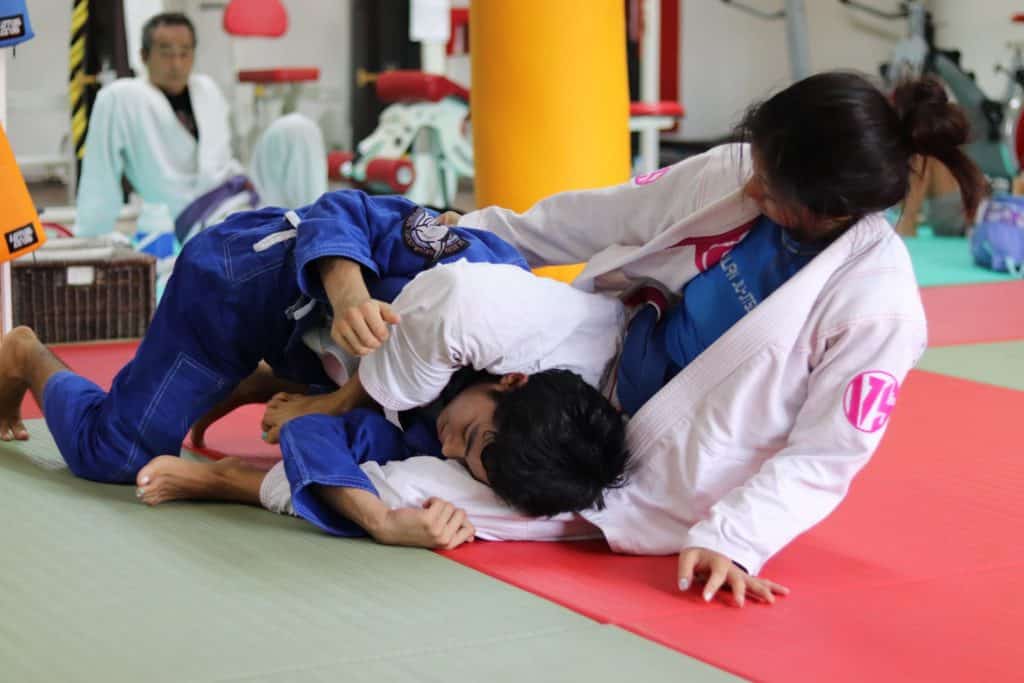
The judokas Judo practitioners wear a white judogi for training, and white or blue for competition. Follow our advice to help you choose the right judogi!
As in other martial arts, colored belts are used to distinguish grades, in the order, for the first kyū, of white, yellow, orange, green, blue and brown belts. Next come the so-called higher belts, corresponding to the Danes: black for 1st to 5th Danes, red and white for 6th to 8th Danes, and red for 9th and 10th Danes.
3. Jiu Jitsu

The case of Jiu Jitsu (pu still Ju Jitsu, or Jūjutsu), “art of suppleness”, is more complex. In reality, it was not originally a unified, codified discipline, but a set of fighting techniques developed by samurai to defend themselves in battles and duels.
These warrior techniques were therefore taught in various traditional schools, called “koryū” during the Edo era. There were as many Jiu Jitsu as there were schools.
It was onlyat the beginning of the 20th century that, in an effort to preserve these techniques, a teaching system gradually emerged that brought together the practices of different schools. And so Jiu Jitsu was born as a modern discipline, with less of a warlike vocation than a pedagogical one.
A number of other martial arts followed in its wake, including Judo and Aikido, as well as Brazilian Jiu Jitsu. In this sense, Jiu Jitsu can be considered the father of many contemporary disciplines.
There are three types of technique, a synthesis of those found in Judo and Karate: striking techniques(atemi-waza), throwing techniques(nage-waza) and ground techniques(ne-waza).
Once again, as the very name suggests, Jiu Jitsu conveys the idea that flexibility prevails over strength. The practitioner therefore avoids pitting force against force: through his movements and various control techniques, he seeks instead to channel the attack and turn it against his opponent.
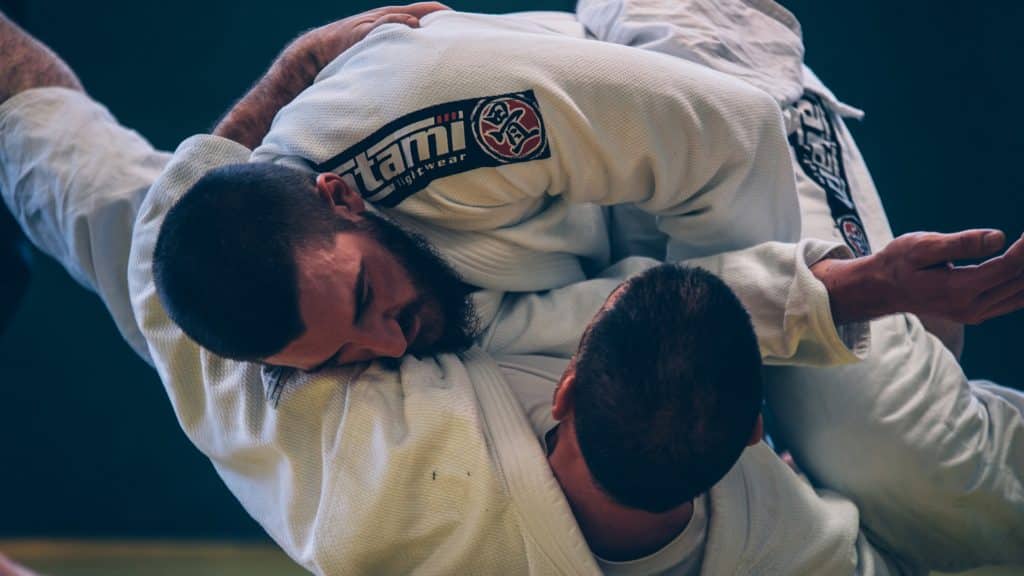
As far as clothing is concerned, we recommend that you wear a gi that is resistant to the collar and seams, as a large part of the techniques are practiced on the ground. A well-made judogi will do. Generally, the training gi is white ; in competition, only white, black and blue are authorized.
The progression of belts is as follows: white, yellow, orange, green, blue and brown, black from 1st Dan, red and white from 6th Dan, and red for 9th and 10th Dan.
4. Aikido

Aikido, the “way of harmony” or “concordance of energies“, was founded by Morihei Ueshiba ōsensei, between 1925 and 1969. Like Judo, it draws in part on the experience of koryū (traditional martial arts schools) and Jiu Jitsu techniques.
However, Morihei Ueshiba adds a genuine spiritual dimension, inspired by both Shinto and Buddhism. He sees Aikido as an “Art of Peace” , in which techniques are designed not to win over the opponent – indeed, there is no competition in Aikido – but to render combat futile.
Aikido partners therefore alternate the roles of attacker(uke) and defender(tori) to practice techniques with bare hands or weapons (wooden sword “bokken“, staff “jō” and wooden knife “tantō“).
A martial art focused solely on defense, it is based on inner harmonization (body-mind) and harmony with the partner’s energy. Thanks to spiral movements, the absorption of the other’s energy and the partner’s imbalance, tori annihilates the attack: uke frees himself from the technique by falling (ukemi), sometimes spectacularly, but always smoothly and controlled.
The basic outfit is the keikogi or whiteaikidogi . It’s the same as in Judo, but there are also specific jackets with shorter sleeves to facilitate wrist-gripping techniques.
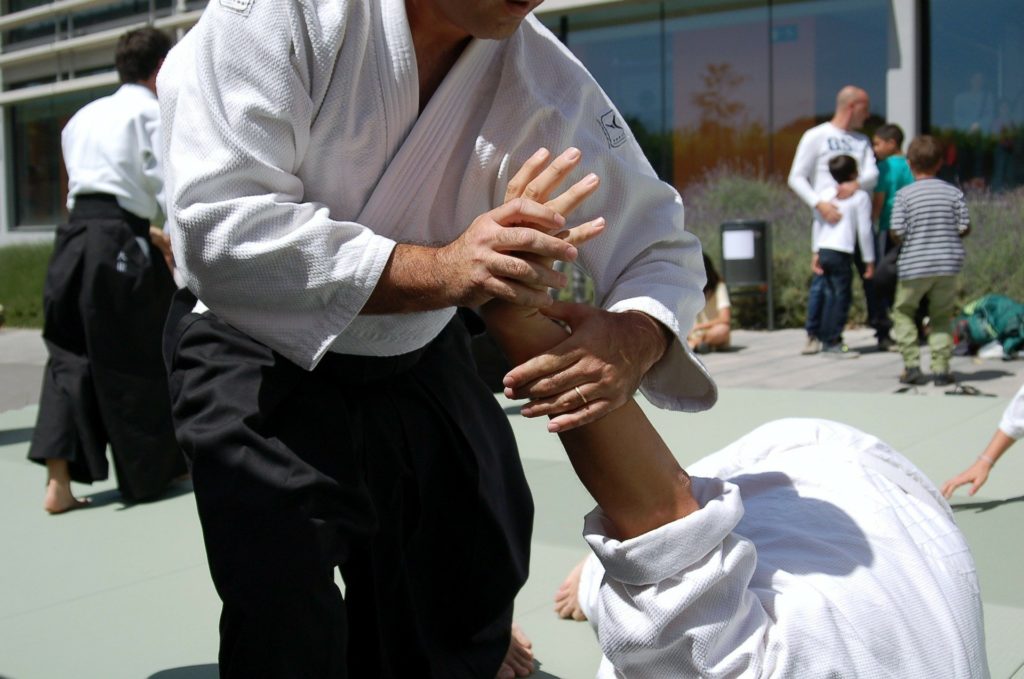
Weapons ( bokken jō, tantō ), as well as the hakama (often black or blue), a kind of divided skirt which the master will authorize the master to wear from a certain level of progression. So, depending on the dojo, hakama may be allowed from the start, or from the third, second or first kyū.
Generally, schools use belt colors to mark the student’s level: white, yellow, orange, green, blue, brown, from sixth to first kyū, then black belt from 1st Dan.
With this information, we hope you’ll choose the discipline that suits you best. In any case, push open the door of the dojos, dare to step onto the tatamis and try it out: there’s nothing like it to help you find your place. your your path!

